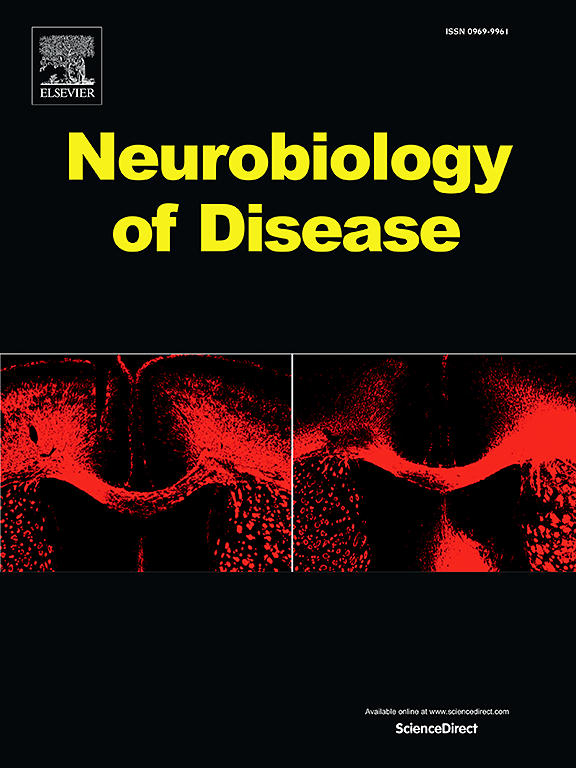The alternative complement pathway drives neuroinflammation and neurodegeneration in mouse models of glaucoma and optic nerve injury
IF 5.6
2区 医学
Q1 NEUROSCIENCES
引用次数: 0
Abstract
Glaucoma is a leading cause of irreversible blindness worldwide, characterized by progressive retinal ganglion cell (RGC) loss and optic nerve degeneration. Although elevated intraocular pressure (IOP) is a major risk factor, disease progression can occur despite normal IOP, highlighting the need for neuroprotective strategies beyond IOP reduction. Neuroinflammation has been implicated in glaucomatous neurodegeneration through complement system activation via the classical and lectin pathways. However, the role of the alternative pathway (AP), which functions as an amplification loop for central complement component 3 (C3) activation, in glaucoma is unclear. In this study, we investigated the role of the AP in glaucoma using a microbead-induced mouse model of glaucoma in mice deficient in either complement factor B (Cfb−/−), to selectively block the AP, or in C3 (C3−/−) to block all three complement pathways. Our results indicate the AP is critical for glaucoma development, and blocking this pathway resulted in significant neuroprotection, preventing loss of RGCs, axons, and visual acuity, which coincided with reduced glial activation and inflammation. Blocking the AP provided comparable neuroprotection to blocking all three complement pathways, indicating that the AP amplification loop is an essential component of destructive neuroinflammation in glaucoma. Furthermore, blocking the AP also conferred neuroprotection in the optic nerve crush model, suggesting a broader role for the AP in optic neuropathies. These findings establish the AP as a key driver of complement-mediated neurodegeneration in glaucoma and highlight the therapeutic potential of targeting the AP in glaucoma and other neurodegenerative diseases.
在青光眼和视神经损伤小鼠模型中,替代补体通路驱动神经炎症和神经退行性变。
青光眼是世界范围内不可逆性失明的主要原因,其特征是进行性视网膜神经节细胞(RGC)丧失和视神经变性。虽然眼压升高是一个主要的危险因素,但即使眼压正常也可能发生疾病进展,这突出了除降低眼压外的神经保护策略的必要性。神经炎症与青光眼神经变性有关,通过经典途径和凝集素途径激活补体系统。然而,作为中枢补体成分3 (C3)激活放大回路的替代通路(AP)在青光眼中的作用尚不清楚。在这项研究中,我们使用微珠诱导的青光眼小鼠模型研究了AP在青光眼中的作用,该模型的小鼠缺乏补体因子B (Cfb-/-)来选择性地阻断AP,或者C3 (C3-/-)来阻断所有三种补体途径。我们的研究结果表明,AP对青光眼的发展至关重要,阻断该通路可产生显著的神经保护作用,防止RGCs、轴突和视力的丧失,同时减少胶质细胞激活和炎症信号。阻断AP提供了与阻断所有三种补体通路相当的神经保护,表明AP扩增环是青光眼中破坏性神经炎症的重要组成部分。此外,阻断AP在视神经挤压模型中也具有神经保护作用,这表明AP在视神经病变中具有更广泛的作用。这些发现证实了AP是青光眼补体介导的神经退行性变的关键驱动因素,并强调了靶向AP治疗青光眼和其他神经退行性疾病的潜力。
本文章由计算机程序翻译,如有差异,请以英文原文为准。
求助全文
约1分钟内获得全文
求助全文
来源期刊

Neurobiology of Disease
医学-神经科学
CiteScore
11.20
自引率
3.30%
发文量
270
审稿时长
76 days
期刊介绍:
Neurobiology of Disease is a major international journal at the interface between basic and clinical neuroscience. The journal provides a forum for the publication of top quality research papers on: molecular and cellular definitions of disease mechanisms, the neural systems and underpinning behavioral disorders, the genetics of inherited neurological and psychiatric diseases, nervous system aging, and findings relevant to the development of new therapies.
 求助内容:
求助内容: 应助结果提醒方式:
应助结果提醒方式:


